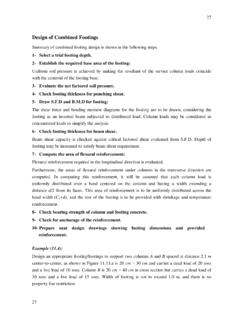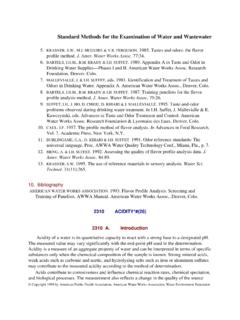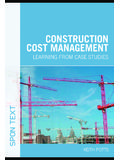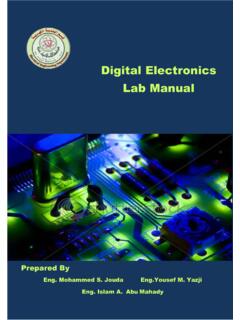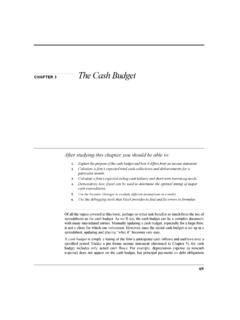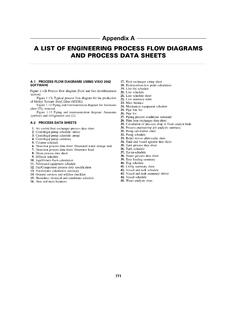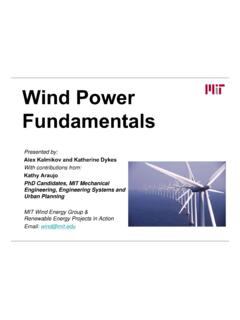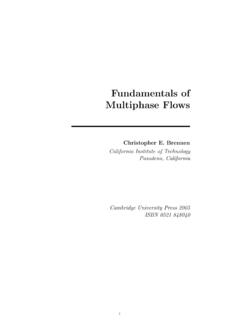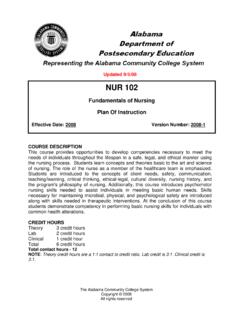Transcription of Principles of Bioseparations Engineering
1 Principles OF. Bioseparations . Engineering . iffcS* RAIA GHOSH. Principles OF. Bioseparations . Engineering . This page is intentionally left blank Principles OF. Bioseparations . Engineering . RAJA GHOSH. McMaster University, Canada Y | * World Scientific NEW JERSEY LONDON SINGAPORE BEIJING SHANGHAI HONG KONG TAIPEI CHENNAI. Published by World Scientific Publishing Co. Pte. Ltd. 5 Toh Tuck Link, Singapore 596224. USA office: 27 Warren Street, Suite 401-402, Hackensack, NJ 07601. UK office: 57 Shelton Street, Covent Garden, London WC2H 9HE.
2 British Library Cataloguing-in-Publication Data A catalogue record for this book is available from the British Library. Cover: Image courtesy of Millipore Corporation. Principles OF Bioseparations Engineering . Copyright 2006 by World Scientific Publishing Co. Pte. Ltd. All rights reserved. This book, or parts thereof, may not be reproduced in any form or by any means, electronic or mechanical, including photocopying, recording or any information storage and retrieval system now known or to be invented, without written permission from the Publisher.
3 For photocopying of material in this volume, please pay a copying fee through the Copyright Clearance Center, Inc., 222 Rosewood Drive, Danvers, MA 01923, USA. In this case permission to photocopy is not required from the publisher. ISBN 981-256-892-1. Printed in Singapore by World Scientific Printers (S) Pte Ltd To my wife, Sutapa This page is intentionally left blank Acknowledgements The author acknowledges with thanks the assistance provided by the individuals and organisations named below: Christine Zardecki of RCSB Protein Data Bank for kind permission to use images of protein and DNA structures (Figures , and of this book).
4 Stanley Goldberg and Marc Lustig of Glen Mills Inc. and Andre Wrysch W. A. of Bachofen AG for providing me with Figures , and of this book and for their enthusiastic support for this project Dominic Spricigo of IKA -WERKE GmbH & Co. KG for providing me with Figure of this book Kevin McLaughlin of Shimadzu Scientific Instruments for providing me with Figure of this book Gene Lauffer of Menardi for kind permission to use images of filtration devices from their website (Figures and of this book). Dana Hubbard, Susan Cheah and Shannon Meirzon of Millipore Corporation for providing me with Figures (A, B and C), , and of this book PCI Membranes for providing me with Figure of this book Shuichi Ogawa of Asahi Kasei for kind permission to use image of membrane filtration device from their website (Figure of this book).
5 Patricia Stancati of Sartorius for providing me with Figure of this book Sandra Covelli and Michael Killeen of Pall Corporation for providing me with Figure of this book vn This page is intentionally left blank Preface Bioseparations Engineering refers to the systematic study of the scientific and Engineering Principles utilized for large-scale purification of biological products: biopharmaceuticals, biochemicals, foods, nutraceuticals and diagnostic reagents. Bioseparations Engineering , both as an academic topic as well as an industrial practice has undergone significant growth and increase in importance in the past decade.
6 Its entry into academia as a taught course took place as usually happens with any new topic: at the postgraduate level. It is now taught as a regular course in many undergraduate chemical and biomolecular Engineering programs. It is also taught either as a separate course or indeed as a component of bioprocess Engineering in almost all undergraduate and postgraduate programs in biotechnology. Most projects start with some necessity and this book is no exception. In the year 1999, as a new faculty member at Oxford University I was assigned to teach the relatively new C5A Bioprocess Engineering and C5B Separations courses for undergraduate Engineering students.
7 Both these courses were expected to have significant Bioseparations Engineering content and the main challenge I faced at that time was the lack of a satisfactory undergraduate level text book. I had learnt Bioseparations Engineering in the early 90s reading the seminal book on this topic by Belter, Cussler and Hu ( Bioseparations : Downstream Processing for Biotechnology, John Wiley and Sons). However, this book had been published in 1988 and by end of the millennium was slightly dated. I therefore started developing my own course notes and handouts.
8 These have formed the building blocks of this book and so in a sense, I effectively started writing this book in 1999. This is intended to be an undergraduate level text book, suitable for a one semester course on Bioseparations Engineering . IX. X Principles ofBioseparations Engineering Chapters 1 to 3 are intended to provide the reader with the basic biological and Engineering prerequisites. Most bioseparation processes are carried out in a multi-step fashion, each step consisting of a discrete separation technique. These techniques have been classified into broad categories in the remaining chapters of the book, chapters 4 to 12.
9 The last paragraph of a preface is usually reserved for acknowledgements. I would like to thank my family members: my parents, my wife, my sister and parents in-law for their encouragement and unstinting support. My wife has been a constant source of moral and material support throughout this project. I am particularly grateful to her for painstakingly proof-reading the manuscript, making it better in the process. Without her help, it would have been very difficult to complete this book. I would like to acknowledge my McMaster colleagues Professors Carlos Filipe, Ronald Childs, Andrew Hrymak, Robert Pelton, Shiping Zhu and Don Woods for kind words of encouragement and support.
10 Going international, I would like to thank Professor Tony Fane of the University of New South Wales, Australia and Professor Zhanfeng Cui of the University of Oxford, UK for their words of advice at the early stages of this project. Last but certainly not the least: I would like to acknowledge my graduate students Dharmesh Kanani and Lu Wang for their help with crosschecking the solutions to the numerical problems presented in this book. Raja Ghosh Hamilton, ON. April 2006. Contents Preface ix 1. Overview of Bioseparations Engineering 1.
